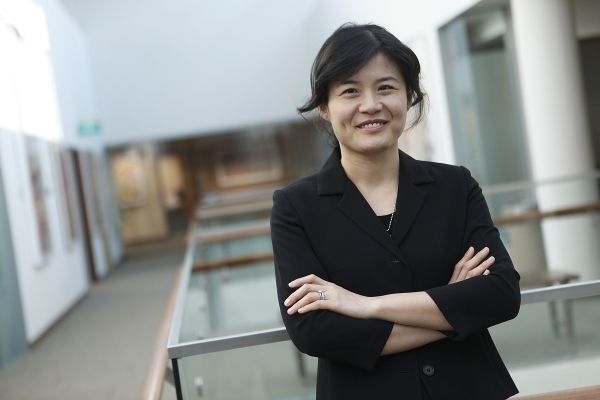
By Alvin Lee
SMU Office of Research – The establishment of the World Trade Organization (WTO) in 1995 coincided with a period of substantial global economic growth, fuelled by lowered tariffs and increased market access in a globalised world economy based on the promise of a rules-based global trading system. Two key principles, reciprocity and non-discrimination, underpinned the WTO system – the former called for countries to provide equivalent concessions and exchange of market access to one another, while the latter obliges member countries to treat products from one country the same as those from any other country.
But by the turn of the century sentiments had soured, with disputes and complaints of trade imbalances and protectionism leading to trade wars in recent years that the WTO was meant to preclude.
‘Terms of trade (ToT)’, which the U.S. Bureau of Labor Statistics defines as “represent[ing] the ratio between a country's export prices and its import prices”, are a key instrument for measuring the balance of concessions across members of trade agreements.
“For example, when China joined the WTO, it implemented tariff cuts and other WTO members reduced tariff rates for Chinese products. If China’s terms of trade worsen as a result of the tariff cuts, China is considered to be a net grantor of ToT concessions and its trading partners net beneficiaries,” explains SMU Associate Professor of Economics Chang Pao-Li, who recently wrote a paper on the topic titled “The Balance of Concessions in Trade Agreements”.
The mechanism of WTO
Relative to factual cooperative tariff rates, a country may consider its outside options where it leaves the WTO and sets whatever tariffs it wishes for its imports but faces likely retaliatory higher tariffs for its exports. In theory, a country can set tariffs that maximise its interests, bilaterally or multilaterally.
“If large countries raise import tariffs, given their market power this tends to push down the world prices; thus large countries get to import the same amount of goods for less money, and in the process create terms-of-trade gain,” explains Professor Chang, referring to exporters lowering prices to stay competitive post tariff hike. “Large countries have ToT incentives to raise tariffs but it has a negative externality on other countries.
“It’s a prisoner’s dilemma: If China is motivated to raise tariffs because of ToT incentives, and the U.S. also chooses to do so, they end up in a worse equilibrium where both countries trade less with each other, but without reaping the unilaterally intended ToT gains. It’s a Pareto inferior equilibrium.”
The WTO thus plays a key role in coordinating tariff cuts across member states that bring the world economy out of the Pareto inferior equilibrium, guided by the principles of reciprocity and non-discrimination.
Growing imbalance in concessions and trade
Two salient changes in the global economic landscape since the early 1990s are the rapid economic expansion in parts of the developing world, and the increase in trade imbalances across the world, both of which have the potential to shift the balance of concessions. Trade imbalances have proved to be a significant factor in the balance of concessions.
Professor Chang, who was appointed to the role of Associate Dean (Research and Industry Engagement) in July, analyses in her paper how both the United States and China, given their cooperative lower tariff rates agreed under the WTO (relative to counter-factual ToT-driven tariff hikes) extend net concessions to their trade partners. In their bilateral relationships, however, the United States has given more ToT concessions to China than it has received in return. This discrepancy in bilateral concessions is largely attributable to trade imbalances.
Professor Chang wrote: “Under a hypothetical balanced trade scenario, their relationship evolves towards near reciprocity following China’s accession to the WTO.”
“By ‘hypothetical balanced trade scenario’, we mean a counter-factual world where trade is balanced [where every country imports the same amount as it exports in terms of value]. In this hypothetical world, if we re-calculate the optimal tariffs for each country, and use that as a benchmark to compare against the factual cooperative tariff profile, the resulting imbalance in concessions between China and U.S. would almost be eliminated. Thus, a large portion of the imbalance in bilateral concessions between U.S. and China is due to the fact that the two countries’ trade imbalance has enlarged over the years.”
She adds: “What it means is that a lot of this bilateral concession granted by U.S. to China is due to the rising U.S. bilateral trade deficit with China.”
Going forward
Professor Chang’s paper generated a dataset of bilateral concessions exchanged among 38 WTO member countries for each year during 1995-2018. The results are perhaps to be expected: the US is the largest net grantor to the WTO system, but China has also become a large net contributor with notable ToT losses in most of its bilateral relationships except with the US.
“The WTO system has done quite well until recent years,” Professor Chang observes. “In 1995 or earlier we see tariff profiles among WTO members achieving a near balance in concessions, but over time because of trade imbalance and/or change in country size, these existing tariff profiles have failed to deliver a balance in concessions. The data does support the claim by the U.S. that it makes quite a large concession relative to the rest of the world, including China.”
So, what is the main message of this paper?
Professor Chang explains: “By providing a measure of concessions, the proposed framework serves as a starting point for discussing the resilience of trade agreements. An imbalanced agreement can be destabilising, as recent complaints from major WTO members about a lack of reciprocity illustrate.
“Notably, the WTO’s dispute settlement process, which is arguably designed to manage ‘trade skirmishes’ under a relatively balanced agreement, may face increasing pressure if the system’s deviation from reciprocity is large and persistent.”
Supporting research and industry engagement
In her new role as the Associate Dean of Research (ADR) and Industry Engagement, Professor Chang will support the SOE Dean’s office in recruitment activities, faculty reappointment and tenure reviews, evaluate grant applications, and coordinate the school’s industry engagement efforts.
“Before taking on the current role of ADR, I had worked with the Economic Development Board (EDB) in analysing proprietary firm-level data by visiting the Department of Statistics (DOS) data lab. Subsequently, in the process of writing the MOE Tier 3 grant, I started to communicate with the government ministries for potential collaborations and mechanisms of sharing administrative data, and fusing of them with banking flow data (of equally confidential nature), with the help of SMU senior administrators.”
Professor Chang found that “these efforts overlapped with those at the university and school levels to engage the government and industry sources for accessing proprietary data to do research and policy analysis of the public good.”
Given SOE’s existing strengths in econometrics, microeconomic theory, and international trade, Professor Chang, in her role as ADR, will also help the SOE Dean’s office to further build up the applied micro group (with emphasis on labour and health). In her view, the definition of success for the role of ADR would be such that faculty members are “well supported in their research activities and ambitions,” and the school “builds up research resources by successful external grant applications.”
Back to Research@SMU August 2024 Issue
See More News
Want to see more of SMU Research?
Sign up for Research@SMU e-newslettter to know more about our research and research-related events!
If you would like to remove yourself from all our mailing list, please visit https://eservices.smu.edu.sg/internet/DNC/Default.aspx

